
- Subject:
- Applied Science
- Biology
- Life Science
- Material Type:
- Module
- Author:
- Mohamed Awad
- Date Added:
- 03/11/2019


This resource is a video abstract of a research paper created by Research Square on behalf of its authors. It provides a synopsis that's easy to understand, and can be used to introduce the topics it covers to students, researchers, and the general public. The video's transcript is also provided in full, with a portion provided below for preview:
"A new combination therapy may help children on the autism spectrum not only develop better social skills but also maintain them over the long term. Researchers working in the US have discovered that giving young people with autism the drug D-cycloserine before teaching them social skills improves their social functioning for months. Training in social skills is widely used to help people with autism overcome social impairment, the defining diagnostic characteristic. Although such training is very effective when delivered, the benefits are often lost once it’s stopped. To help prolong the training effects, the researchers looked at whether D-cycloserine could help children with autism remember lessons about social skills. D-cycloserine has been shown to boost long-term responses to behavioral therapy, but its impact on autism had not been explored. The team held weekly group training sessions for 68 children with autism..."
The rest of the transcript, along with a link to the research itself, is available on the resource itself.
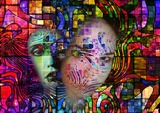
Topic 12: Psychological DisordersTextbook readings: pp. 545-546; pp. 549-550; pp. 555-581; pp. 590-596.Watch: Discovering Psychology: Discovering Psychology: Psychopathology (Program 21)Psychopathology is the twenty-first program in the DISCOVERING PSYCHOLOGY series. Through glimpses of the original theories of Philippe Pinel, this program explores the biological and psychological components of mental illness, as well as the role of genetics and cultural factors. It also takes a closer look at a few of the major mental illnesses like depression, neurosis, manic-depressive disorders, and schizophrenia.©2001 WGBH Educational Foundation All Rights ReservedWatch: The Mind - Series Homepage Produced by Colorado State University. 1999, all descriptions are from series website.The Mind: Mood Disorders: Mania and Depression (Module 31)Presents vivid examples of the mood fluctuations of patients who suffer from periodic affective episodes.The Mind: Mood Disorders: Hereditary Factors (Module 32)Illustrates the findings of a 10-year study that involved 12,000 volunteers in an Amish community and represents a careful analysis of genetic factors related to manic-depressive disorders.The Mind: Mood Disorders: Medication and Talk Therapy (Module 33)Shows the effectiveness of combining drug therapies with traditional psychotherapy.Watch:The Brain - Series Homepage Produced by Colorado State University. 1997, all descriptions are from series website.The Brain: Schizophrenia: Symptoms (Module 26)In this module, mental health professionals observe a patient named Jerry, a classic schizophrenic. Jerry's case and medication schedule are described, and his disordered speech and behavior are shown. Prominent psychiatrists describe schizophrenia and the prognosis for those diagnosed with this disease; a locked psychiatric ward provides a graphic illustration.The Brain: Schizophrenia: Etiology (Module 27)This module covers the history of attitudes, beliefs, and theories about the etiology of schizophrenia. While the illness was long thought to be environmentally caused, this module emphasizes the scientific evidence in support of its organic origins. Dr. Arnold Scheibel of UCLA Medical Center describes cellular pathology in the hippocampus and speculates on the possible role of viruses. A genetic component is also demonstrated.The Brain: Autism (Module 29)This module opens with statistics and a description of autism and how the disorder has been viewed historically. Studies now support the theory that autism results from a lack of normal neural growth during prenatal development. Dr. Temple Grandin of Colorado State University, severely autistic as a child, is presented as someone who overcame her autism and managed to use her way of perceiving the world to her advantage.Learning objectives:1. Define psychological disorder and psychopathology.2. State the main features of psychological disorders according to the APA (American Psychiatric Association).3. Describe how the DSM (Diagnostic and Statistical Manual of Mental Disorders) is used to classify or categorize disorders.4. Explain the biological and the “diathesis-stress” models of psychological disorders. 5. Describe main features (symptoms) of these psychological disorders: Anxiety Disorders (and within this category, “phobia” and “panic disorder” and “social anxiety disorder”); Obsessive-Compulsive and Related Disorders (and within this category, “body dysmorphic disorder”), PTSD (Posttraumatic Stress Disorder), Mood Disorders (and within this category, “major depressive disorder” and “bipolar disorder”), Schizophrenia; ADHD (Attention Deficit Hyperactivity Disorder) and Autistic Spectrum Disorder.6. Discuss major theories that seek to explain what “causes” Anxiety Disorders, Mood Disorders, Schizophrenia, ADHD and Autistic Spectrum Disorder.
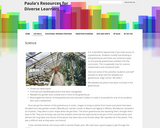
It is a wonderful opportunity if you have access to a greenhouse. Students usually love working in the greenhouse and there are numerous ways to incorporate greenhouse activities into the curriculum. This is especially true for science, mathematics and vocational skills.
This webpage is a narrative of some of the activities students and staff worked on when we first adopted our greenhouse. Included are learning activities for high school students in a "life skills" program. A few related handouts are included as attached files.
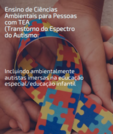
Folder didático Ensino de “Ciências ambientais para pessoas com TEA (Transtorno do espectro do autismo): Incluindo ambientalmente autistas imersas na Educação Especial/Educação Infantil"é o produto educacional resultante da pesquisa desenvolvida no âmbito do Programa de Pós- Graduação em Rede Nacional para Ensino das Ciências Ambientais (PROFCIAMB), do Centro de Ciências Exatas, da Universidade Estadual de Maringá (UEM), sob orientação do Prof. Dr. Felipe Fontana. Objetiva auxiliar docentes durante as aulas com conceitos da Educação Ambiental veiculados na Educação Infantil para crianças com TEA. O folder está estruturado em 14 páginas. Discorrendo sobre o que é o TEA (Transtorno do espectro do autismo), informações sobre a Educação Ambiental e a importância dessas crianças serem incluídas ambientalmente. Serão apresentados indicações de aprofundamentos sobre Autismo para que professores possam se instrumentalizar sobre o assunto e ainda opções de práticas educativas. Almeja-se que esse folder auxilie e contribua na promoção do ensino das Ciências Ambientais.
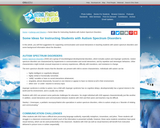
This article includes ideas for effectively teaching students with autism spectrum disorders, including the visual presentation of information and teaching social skills.

Swinburne University of Technology's free Autism MOOC takes a practical approach to the study of autism. The course is designed for parents and carers of people with autism and those who work with people with autism.
It seeks to equip students with the skills and knowledge to solve practical issues in the lives of individuals who have autism. The course uses real scenarios, draws on students’ experiences and aims to foster a supportive network of parents and carers.
This collection showcases the video resources from the MOOC.
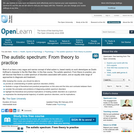
Most of us have a very vague and narrow concept of what autism is, based mainly on such stereotypes as Dustin Hoffman's character in the film Rain Man. In this unit you will discover that there is a wide spectrum of disorders associated with autism, and an equally wide range of approaches to diagnosis and treatment.